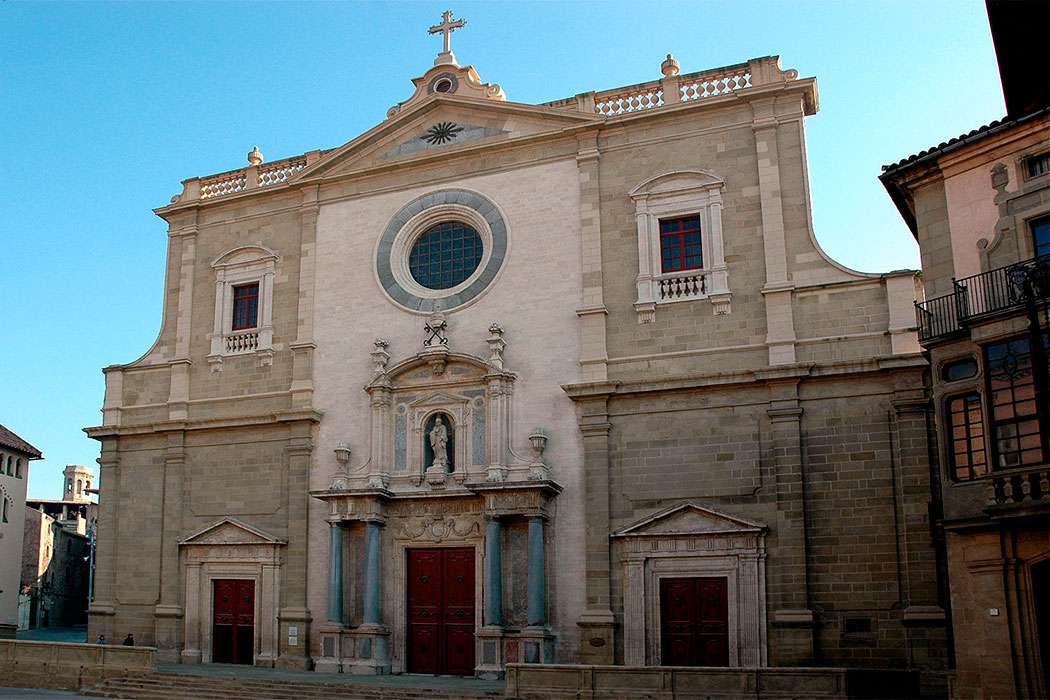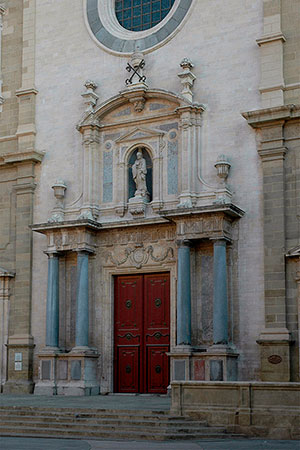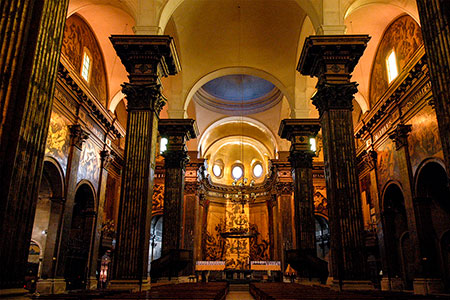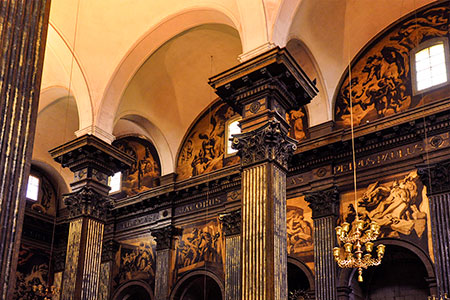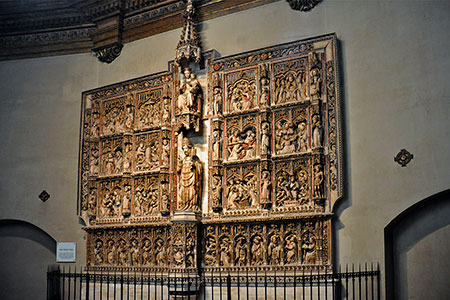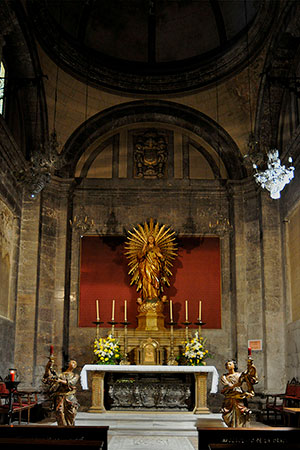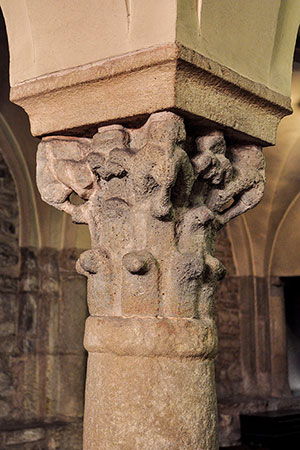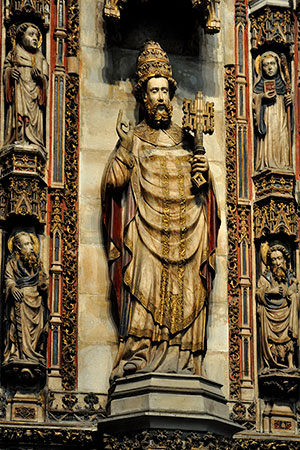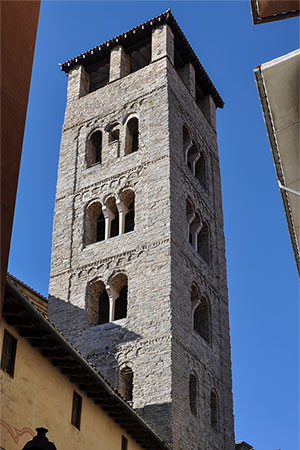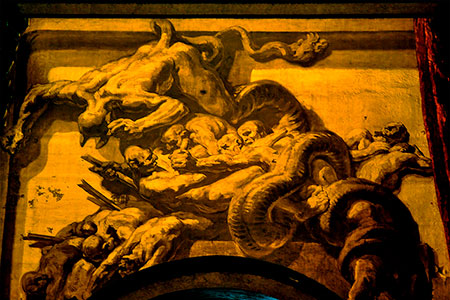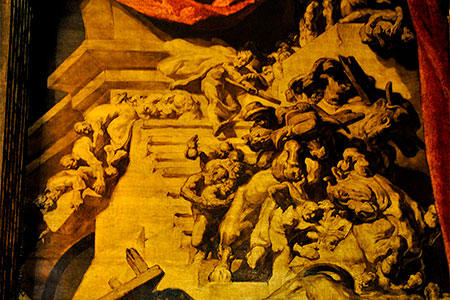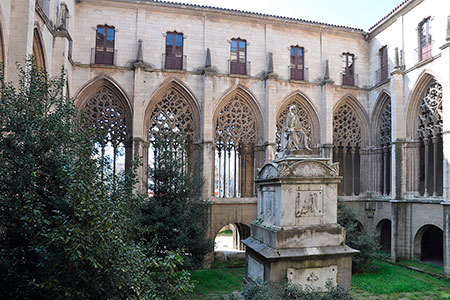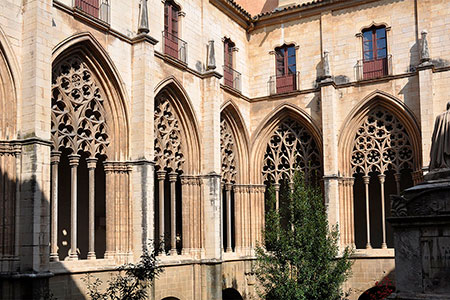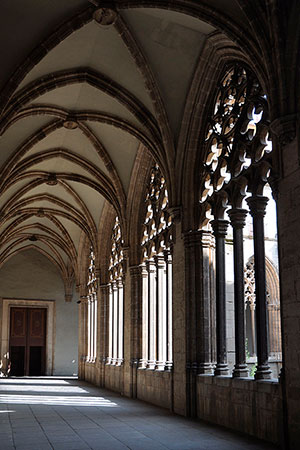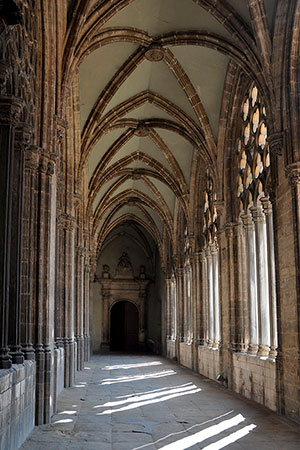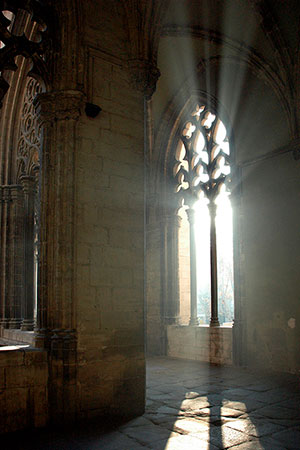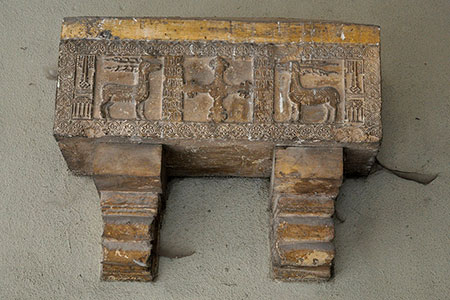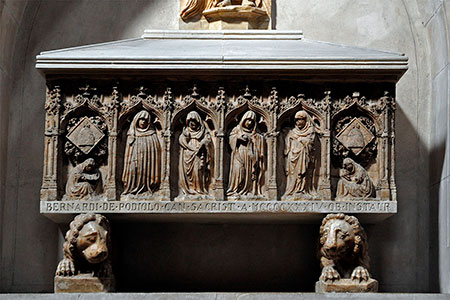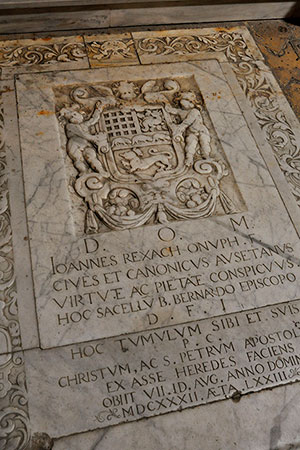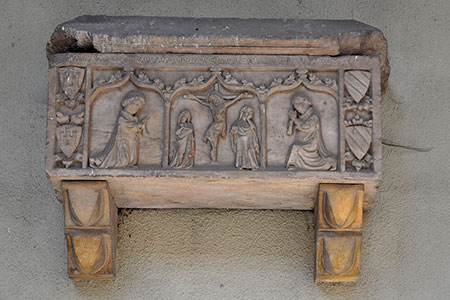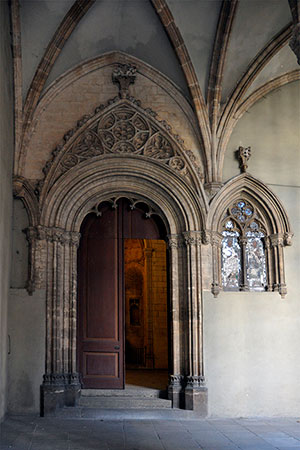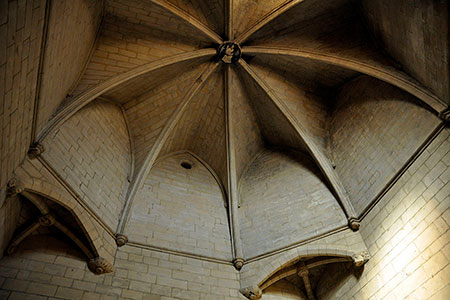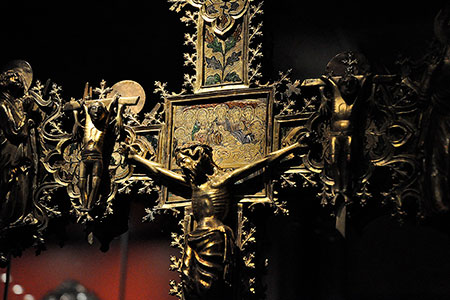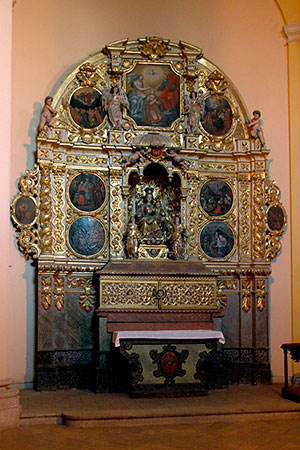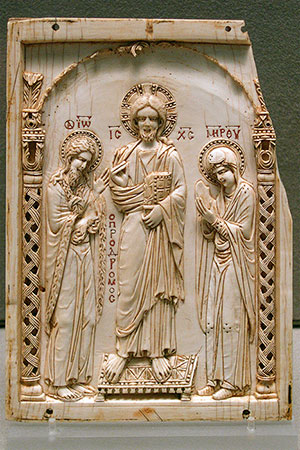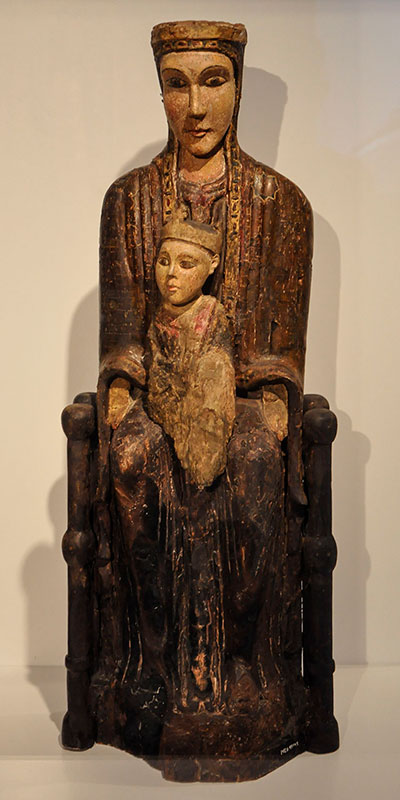Canonry of the cathedral of Vic
Catedral de Sant Pere de Vic / Sancti Petri Sede Vico / Ausona
(Vic, Osona)
The first bishop of Vic, Cinidi, is mentioned in 516 following his participation in a council in Toledo. There is not much more information on the later period, among others, tells us that following the Saracen invasion (718) the cathedral was destroyed. The bishopric was restored with the repopulation of the region carried out by Count Guifré el Pelós (Wilfred the Hairy), in 878..
Vic was divided into two sectors, one under county rule, in the upper part and centred by the castle-palace, and the other under episcopal power. The bishopric, to some extent dependent on Narbonne, was restored in 886. There is evidence of several churches that formed an episcopal complex, in a similar way to other places. On the one hand, it is known that around 925 the church of Sant Pere was consecrated, that at least in 952 the church of Santa Maria existed and that the church of Sant Miquel was also consecrated in the middle of the 10th century.
A new cathedral dedicated to Sant Pere was erected again and consecrated in 1038 by Bishop Oliba. In this process, the church of Sant Miquel was lost. This church of Sant Pere was rebuilt between 1140 and 1180, leaving a building with a single nave, transept and independent bell tower. Between 1323 and 1400, a new Gothic cloister was built over the old Romanesque cloister. Much later, in 1782, it was decided to enlarge the cathedral, which had become too small. In the end, it was decided to build it again, an operation that also involved the destruction of the circular church of Santa Maria in front of it. The new church was consecrated in 1803.
The canonry
It is likely that the Episcopal canonry of Vic existed before the Saracen invasion, but cannot be confirmed until the recovery of the territory. The first records do not appear until 881. The first bishop of this period was Gotmar, of whom indirect references are found because of his participation in the consecration of parishes in the diocese. In 957 Bishop Guadamir decided to reform this canonry due to its state of decay. He granted it goods as well as stating that it was a follower of the Aachen rule. The end of this century was marked by a series of internal struggles that did not favour community life. In fact, the canons lived in private houses with their service, a privilege they defended and enjoyed for many years.
After several attempts to re-establish things, a certain discipline was finally imposed in 1082, although the new situation was not followed by all the members of the canonry: The young members lived a communal life while the old canons did not want to give up their privileges: in fact, the canonry was divided into two communities, the stricter one passing to Santa Maria de l'Estany in 1080. In the following years, the organisation of the community had not yet been completed; the canons maintained certain privileges, kept their rents and until the 14th century had the right to elect a bishop. Behind the cathedral there is still an old building where the canons had a hostelry and a pilgrims' hospital.
The present-day cathedral
The present-day cathedral is a construction that preserves elements from different periods, although most of the building is the result of the reconstruction carried out at the end of the 18th century following a project by Josep Moretó. The oldest part is the crypt, already existing in the 9th century and enlarged in the 12th century. It was rediscovered in 1941, and a series of ancient capitals can be seen. The bell tower dates from the time of Bishop Oliba (11th century) and has openings that become wider as you go upwards. There is also a Gothic cloister built on the remains of an earlier cloister, which was dismantled and rebuilt during the construction of the present church.
The old main altarpiece, an alabaster work by the sculptor Pere Oller, is also in very good condition. The Episcopal Museum has a large collection of Romanesque sculpture from the old building. On the other hand, good examples of the production of the desk linked to the canonical building have also been preserved. The interior walls of the cathedral are decorated with mural paintings by Josep Maria Sert, painted between 1939 and 1945 to replace those he had done himself between 1926 and 1930, which were lost in a fire at the beginning of the Civil War in 1936.
- AINAUD DE LASARTE, Joan (1953). Dades inèdites sobre la catedral romànica de Vich. Ausa Núm. 5
- BARRAL I ALTET, Xavier (1979). La catedral romànica de Vic. Barcelona: Artestudi
- BARRAL I ALTET, Xavier; PUJADES, Josep (1996). Noves aportacions al coneixement de l'estructura arquitectònica e la catedral de Vic. Lambard, estudis d'art medieval. Barcelona: I E Catalans
- CRISPÍ CANTON, Marta (2019). El cicle de Santa Maria Magdalena al claustre gòtic de la catedral de Vic. Ausa XXIX
- CRISPÍ, Marta i altres (2019). La catedral de Sant Pere de Vic. Barcelona: P. Abadia de Montserrat
- FLOREZ, Henrique (1774). España sagrada. Vol. XXVIII. Madrid: A de Sancha
- FREEDMAN, Paul H. (1985). Tradició i regeneració a la Catalunya medieval. Barcelona: Curial
- GAVÍN, Josep M. (1984). Inventari d'esglésies. Vol. 15. Osona. Barcelona: Arxiu Gavín
- GUDIOL I CUNILL, Josep (1981). Els claustres de la catedral de Vic. Vic. P. P. Estudis Ausonencs
- JUNYENT, Eduard (1959). El retablo mayor de la Catedral de Vich. Ausa. Vol. 3 núm 30
- MASNOU, Josep (2021). La vida canonical a la catedral de Vic (886-1230). L’aplicació de la reforma gregoriana a partir de l’estudi prosopogràfic. Tesi doctoral. Universitat de Barcelona
- MOLIST BADIOLA, Miquel dels Sants (2015). Els murals de Sert a la catedral de Vic. Barcelona: Copy Blau SL
- PLADEVALL I FONT, Antoni (1986). Catalunya romànica. Vol. III, Osona II. Barcelona: Enciclopèdia Catalana
- SALARICH, Joaquín (1854). Vich: su historia, sus monumentos, sus hijos y sus glorias. Vic: Soler Hermanos
- SUBIRANAS FÀBREGAS, Carme (2006). L'excavació arqueològica a la plaça de la catedral de Vic (Osona). L'església de Santa Maria la Rodona. Generalitat de Catalunya
- VICENS I SOLER, Teresa (1996). El retaule de Pere Oller de la catedral de Vic: Algunes observacions iconogràfiques. Lambard, estudis d'art medieval. Barcelona: I E Catalans
- VILLANUEVA, Jaime (1821). Viage literario a las iglesias de España. Vols. VI i VII. València: Oliveres
